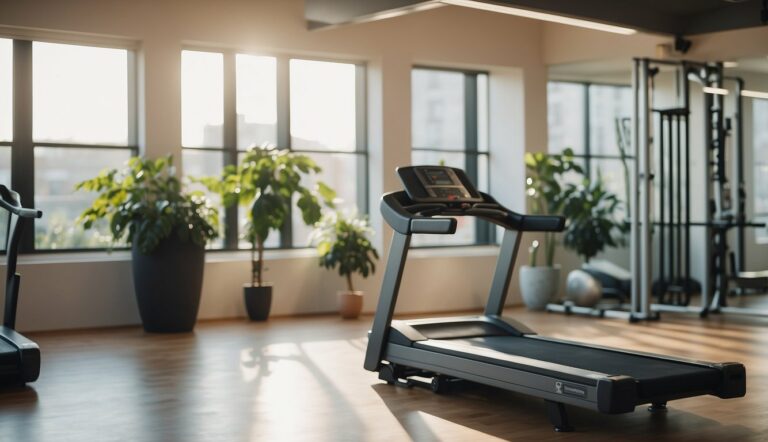Post-Run Relaxation Techniques: Essential Recovery Methods for Runners
Post-run recovery is a critical component of every runner’s training routine. As a UESCA certified running coach, I’ve seen firsthand the impact that proper cooldown strategies have on performance and injury prevention. After completing a run, it’s essential to shift focus to relaxation techniques that promote muscle recovery and reduce soreness.
Incorporating relaxation methods such as yoga and deep breathing can significantly enhance post-run recovery. These practices not only help alleviate tension in the muscles and joints but also contribute to mental clarity and stress reduction. By spending a few extra minutes on these activities, runners can improve their overall mobility and prepare their bodies for the next workout more effectively.
Fundamentals of Post-Run Recovery
Post-run recovery is a critical component for any runner’s routine to reduce muscle soreness and prepare the body for the next workout. Strategic hydration and nutrients replenishment are pivotal for a swift recovery process.
Understanding Recovery
I ensure that my runners understand recovery as a process that allows the body to repair and strengthen itself post exercise. It’s not just about rest; it’s about actively aiding the body’s natural healing processes.
Hydration is the cornerstone of recovery; replenishing fluids lost during a run is essential for maintaining blood flow and heart rate normalization. Moreover, a balanced recovery strategy addresses the clearance of lactic acid, which, if left unchecked, can contribute to muscle soreness.

Phases of Post-Run Recovery
The immediate phase after a run focuses on heart rate reduction and blood flow promotion to clear lactic acid and prevent stiffness. Here are key steps within this phase:
- Hydrate: Replace fluids immediately to aid overall recovery and support metabolic processes.
- Cool Down: A gradual slowing down of exercise allows for a decreased heart rate and smooth transition to rest.
Subsequent recovery phases aim to restore glycogen stores and repair muscle fibers:
- Nutrition: Consume carbohydrates and protein within 30 minutes post-run to replenish glycogen and aid muscle repair.
- Rest: Quality sleep in the 24-48 hours after a workout greatly affects recovery by accelerating tissue repair and growth.
By understanding and implementing these fundamentals, runners can enhance their recovery and set the stage for improved performance in subsequent workouts.
Importance of Stretching

Stretching after running is essential to regain full range of motion, improve flexibility, and enhance mobility. I find these practices to be fundamental for runners to maintain muscle health and performance.
Dynamic vs Static Stretching
Dynamic stretching involves movement-based stretches that effectively prepare the muscles for the range of motion they’ll experience during a run. It’s characterized by active movements that help to get the blood flowing and muscles warmed up. Examples include leg swings and arm circles.
Static stretching, on the other hand, involves holding a stretch in a fixed position for a period of time, typically anywhere between 30 seconds to a minute. This type of stretching is best performed post-run to help in muscle recovery and to alleviate tension.
Benefits of Stretching for Runners
Increased Mobility and Flexibility:
- Static stretching after a run can enhance flexibility over time, allowing for efficient movement during running and daily activities.
- Dynamic stretching contributes to greater mobility, preparing the joints for a range of movements encountered during running.
Reduced Muscle Tension and Soreness:
- Consistently incorporating post-run stretching can help reduce muscle soreness and accelerate recovery.
- Stretching aids in releasing muscle tension which can build up from repetitive running movements.
- Flexible muscles and joints are less prone to injuries. Stretching can help balance muscle groups and prevent common running injuries.
- Maintaining a routine of stretching after running can contribute to correcting muscle imbalances and alignment issues.
In my experience, it’s vital for runners to develop a balanced stretching routine combining both static and dynamic exercises to support overall running performance.
Targeted Stretching Routines
As a running coach, I often emphasize the importance of targeted stretching to effectively cool down and encourage muscle recovery. Focusing on key muscle groups can enhance flexibility and reduce the risk of injury.
Lower Body Focus
Hamstrings and Calves:
- Supine Hamstring Stretch: Lie on your back with a strap or towel around your foot. Gently pull the leg towards you while keeping your knee slightly bent.
- Calf Stretch: Place your hands against a wall, extend one leg behind with a straight knee and the heel flat on the ground. Lean forward slightly to stretch the calf of the extended leg.
Quads, Hip Flexors, and Glutes:
- Quad Stretch: While standing, hold your ankle and pull your heel towards your glutes. Stand upright and hold for 30 seconds.
- Hip Flexor Stretch: Step into a lunge position, keeping your back leg straight and your front leg at 90 degrees, then shift your weight forward.
- Seated Glute Stretch: Sit with one leg extended, cross the other leg over, and gently press the knee towards the chest.
Pelvis and IT Band:
- Lying IT Band Stretch: Lie on your side with the bottom leg straight. Cross your top leg over and pull it towards the opposite shoulder until you feel a stretch along your IT band.
- Pelvic Tilts: Lie on your back with knees bent and perform small movements, arching and flattening your lower back.
Upper Body & Core
Chest, Arms, and Upper Back:
- Chest Stretch: Stand in a doorway with your forearm on the frame and lean forward slightly.
- Triceps Stretch: Raise one arm, bend at the elbow, and reach down your upper back. With the opposite hand, gently press on the elbow.
Abs and Obliques:
- Seated Forward Fold: Sit with legs extended, hinge at the hips and reach for your toes to stretch the lower back and hamstrings.
- Side Bends: Standing tall, extend one arm overhead and lean to the opposite side to stretch the obliques and lats.
By incorporating these stretches into your post-run routine, you can target the main muscle groups used while running, which include the hamstrings, quads, calves, glutes, hip flexors, and IT bands, as well as muscles in the lower back, core, chest, and arms. These stretches help to alleviate tension and promote recovery, preparing you for your next training session.
Recovery Techniques Beyond Stretching

After an invigorating run, your body needs more than just stretching for optimal recovery. A well-rounded post-run routine centers on replenishing nutrients, easing muscle tension, and utilizing recovery tools to ensure your body has what it needs to repair and strengthen.
Post-Run Nutrition
I always emphasize the importance of post-run nutrition as it directly impacts your recovery process. Hydrating with water or a sports drink is crucial to replenish fluids lost through sweat. To effectively refuel, consume a mix of protein and carbohydrates within 30 minutes after your run. Here’s an ideal post-run snack:
- Protein: 10-20 grams
- Carbohydrates: 20-30 grams
| Food Item | Protein (grams) | Carbohydrates (grams) |
|---|---|---|
| Greek yogurt | 10 | 20 |
| Turkey sandwich | 20 | 30 |
| Smoothie | 15 | 25 |
Cool Down and Relaxation
Don’t underestimate the power of a proper cooldown. Gradually reducing your pace to a walk allows your heart rate to return to normal. Implement mindful breathing techniques, taking deep, controlled breaths to help relax your entire body. I personally allocate at least 5 minutes post-run to simply sit or lie down in a quiet space to help my body transition out of exercise mode.
Use of Recovery Tools
Lastly, incorporating the use of recovery tools can significantly aid in your muscle recovery. A foam roller is excellent for self-myofascial release, easing muscle tightness and improving blood flow.
Additionally, I frequently recommend a gentle massage with a hand-held device or by a professional to target deeper layers of muscle. For those looking to further enhance their strength and flexibility, regular strength work on non-running days complements your running routine by building a solid foundation.
Injury Prevention and Management
As a UESCA certified running coach, I prioritize comprehensive strategies to prevent injuries and manage post-run complaints effectively.
Common Post-Run Complaints
Post-run, it’s common for athletes to experience DOMS (delayed onset muscle soreness), shin splints, plantar fasciitis, and Achilles tendon discomfort. These are often due to overuse, improper form, or inadequate recovery time. Preventative strategies include:
- Gradual Progression: Increase running intensity by no more than 10% weekly to avoid overloading tissues.
- Cross-Training: Incorporate low-impact activities to support overall muscle strength and joint health.
- Proper Footwear: Ensure shoes provide adequate support to fend off plantar fasciitis and related issues.
- Form Correction: A neutral pelvic tilt can minimize excessive strain on joints and tendons.
Consulting with Health Professionals
When injuries arise, consulting with a physical therapist or sports medicine professional is essential. They provide tailored advice for a safe return to running and aid in maintaining an injury-free status. Key management tactics involve:
- Rehabilitation Exercises: Targeted exercises that address specific weak areas, promoting strength and stability.
- Professional Assessment: A thorough evaluation to identify imbalances that could lead to running injuries.
Injury prevention and management are pillars of remaining healthy and active in running. Following structured plans and seeking professional advice when necessary can keep runners on track toward their goals.






